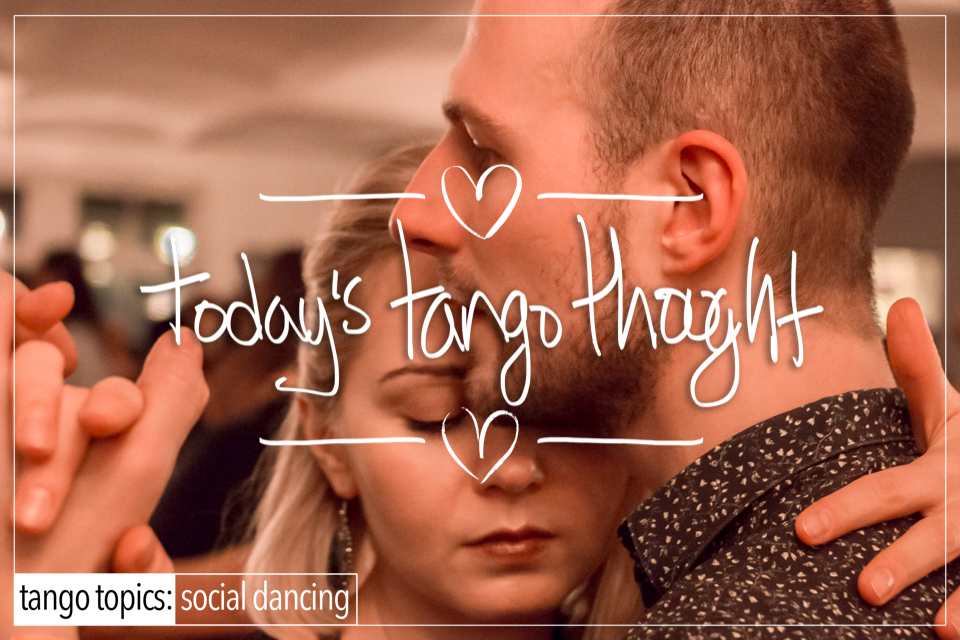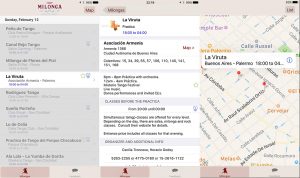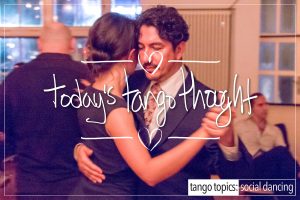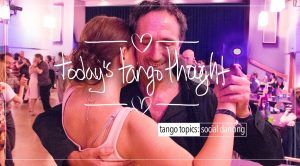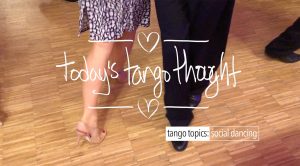“The Passion of Tango” or “Tango is a Passionate Dance” or “Tango is a soulful dance”.
You have heard these statements, or refrains like them repeated over and over again from so many spectators, dancers, teachers, and teacher/performers. These sentiments convey the idea or a series of ideas about Argentine Tango that get people into the dance, and ultimately to stay with the dance. They’re in nearly every piece of tango marketing or promotional literature that you see (with the exception of this page), “Come feel the passion of Argentine Tango”, or something like that. Further you have whole swathes of the Tango going populace that so vehemently believe these things, that they act them out as if it were truth, and gospel.
Ask yourself the following questions, and honestly answer please: “Do you passionately fall in love with each and every one of your partners ?”, or this one “Is there romance in every embrace, in every dance, in every tanda, with every partner ?”. The key words here are ‘each’, ‘every’, ‘passion’, and ‘love’. Continuing… “Is each dance so amazingly soulful that it fills you with a deep, meaningful, heart-filled presence of the other person’s soul every time ?”, or “Are you going to love each and every one of your partners, in each and every dance ?” or “Is each dance that you have, a romantic, and passionate dance in every tanda ?”. And so that we’re clear here, because this is your frame of reference -> ‘love’ meaning ‘eros’ or erotic love, to sleep with, to make love to/with, to engage in sexual congress, to engage in coitus with your dancing partner. And yes that is your frame of reference by the way…read on below, you’ll see why.
The answers to those questions are more than likely a resounding “No”. If they’re not, then what’s coming next will fall on deaf ears. 🙁
To be clear, more than likely the dances that you’re currently having are marred by physiological arm/hand compression (squeezing), bodily contortion, pulling, pushing, hanging, physiological forearm/head/hand/body pressures, force, tension, and lots and lots and lots of resistance. Further still, they’re marred even further by partners not hitting the beat of the music, let alone finding and engaging a musical pause! And if that sounds arrogant to you, then you’re missing the point of the statement: This isn’t about perfectionism, it’s about simple body and musical clarity or the lack therein!
Before we go any further, we need to address the hanging gaff that’s sitting out there. To be fair, while it’s true that there may be a moment (ONE MOMENT in a tanda) where you MAY have an ‘affection’ for someone that you’re dancing with. The reality is that it is a MOMENT, it passes, and it is an affection that passes. No ? There is no ‘passion’ there. There’s no ‘romance’. If there was, then assuming you’re married, your spouse is going to have a few questions for you when you get home! You are not going to be any more ‘romantic’ with these people that you dance with than you would your own mother or father!
Further Clarity: Your frame of reference is that you see an opposite gendered couple, in an embrace that lasts longer than a few seconds, where the embrace is touching, wrapped up, tight, cloistered, body on body, and while these people may or may not be engaged in an intimate romantic relationship, as far as you can tell, all you see is the embrace, the closeness of it, and the apparent look of ‘passion’ on their faces, and you assume that it must be ‘passionate’.
This is not passion! It’s concentration! It’s focus. It’s listening to each other’s bodily motions, and the responses. This is no more ‘passionate’ than a small kitchen appliance unplugged and about as useful. Because your frame of reference is limited to —> embrace = romance = erotic = passion (E=R=E=P) that’s all you can understand. It is inconceivable that there may be something else going on. Something far more practical.
The Practical Part: Dancers that have been dancing for a while know that there is no more passion in a close embrace than you would hug a relative, or shake someone’s hand. What’s really going on is technique, listening, hearing the music, and moving with each other to greater and greater degrees of minutiae of micromovements. And if you want to call that ‘passionate’ then step right this way there’s a few bridges that are for sale! Which is to say that this line of reasoning it is entirely ‘magical’ thinking, and living in la-la land. It’s not real.
You may argue that “Ok, you’re right, not all dances are ‘passionate’, some people I dance with I don’t ‘connect’ with”. If that’s true, what does that say about the people that you do ‘connect’ with ? Are you ‘passionate’ with those people too ? More than likely “NO”, you’re not. Again, you would no more sleep with 99.99% of your partners than your own mother would!
Wait, wait, wait! What about ‘Connection’ ? There is the topic of ‘Connection’ that could be construed as ‘passionate’. No. It’s a physiological contact point, nothing more than that. Look, This is really simple. You want to believe in the fallacy. You like the ‘lie’, it’s romantic. Understood. You like your fantasy, and nothing that some teacher is telling you to be true, you’re just not going to buy it or believe it. Until…
The Tango Topics Opinion: What is ‘real’ then ? Better technique, better listening skills, better abilities. That what is real. From that reality you can quite literally transcend what you think you know and understand right now. Again, not arrogance but rather proven experience from multiple sources. There is a transcendental space that one can enter through the guise of Argentine Tango. But this transcendental space is one that is based on honesty, skill, technique, and a hyper awareness, not to mention an attention to detail. That is the only way that you can get to the ‘nirvana’ that you are likely seeking. However at that point, that nirvana lasts not for a single moment, nor a single dance, but for an entire tanda or two or three.
One more thing…this post should not be seen as anti romance, anti soulful, or anti intimacy, but rather it forces you to look at the facts, the reality of the embrace, and to see it for what it is, an embrace, and nothing more than that. What you choose to do with it is up to you. You can either live in fantasy land, or live in the real world where actual things can actually happen.

